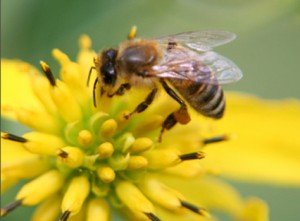22
Jan
EPA Challenged Over Conditional Registration of Nanosilver Product
(Beyond Pesticides, January 22, 2013) The U.S. Environmental Protection Agency (EPA) recently faced tough questioning from the U.S. Court of Appeals for the Ninth Circuit over its decision to conditionally approve a pesticide product containing nanosilver as the active ingredient. The antimicrobial pesticide product, HeiQ AGS-20, contains microscopic particles of silver and has been applied to textiles such as clothes, blankets, and pillowcases, in an attempt to suppress odor and bacterial growth. The main argument in the Natural Resource Defense Council (NRDC) v. EPA lawsuit is that EPA was wrong  to assume that 3-year-olds would be the most vulnerable consumers. Instead, NRDC attorney Catherine Rahm of Washington argued that, “Infants are more likely than any other subgroup to chew on fabrics that could contain this pesticide.â
In arguments over whether EPA lawfully granted conditional registration to HeiQ AGS-20, NRDC challenged EPAâs risk assessment for infants and children claiming the agency erred by assuming in its risk assessment that 3-year-olds would be the most vulnerable consumers. Up for debate is oral exposure to the product and whether 3-year-olds chew more aggressively than infants and produce more saliva, an important factor for extracting nanoparticles from products and becoming exposed. NRDC contends EPA’s assessment is flawed in distinguishing between the chewing action between infants and toddlers, and that infants are also at high risk from oral exposures. EPA however stated it has a long-standing practice of treating 3-year-olds as the most vulnerable consumer to textiles. Additionally, Judge Jay Bybee told EPA not to spend time arguing if NRDC has standing to bring its claim because, according to Judge Bybee, âWe’ve got affidavits in the record from parents who said, ‘Look, we’re very concerned about this.'”
Judge Bybee also questioned EPA about the labels on products containing nanosilver, and expressed his concern that these labels may be misleading. The Judge stated, â”It’s going to be called ‘super coating that makes you not stinky.’ And that’s very different from saying, ‘This contains nanosilver that you don’t want to let your infants chew on.'”
A silver nanoparticle (or nanosilver) consists of many silver atoms or ions clustered together to form a particle 1-300nm in size. Due to their small size, these nanoparticles are able to invade bacteria and other microorganisms and kill them. Nanoparticles in soluble ionic form become toxic to bacteria. Just as the size and chemical characteristics of manufactured nanoparticles can give them unique properties, these same properties âtiny size, vastly increased surface area to volume ratio, high reactivityâ can also create unique and unpredictable human health and environmental risks.
Because of their size, nanoparticles can be easily inhaled, absorbed by skin contact, or ingested. Little to no information is known about the fate or effects nanoparticles, specifically nanosilver, can have on the digestive tract, lung, or skin of those that are exposed to these particles. Research is still ongoing to investigate whether nanosize particles cause pulmonary inflammation as well as systemic effects, and whether they translocate from the lungs to other organs such as the liver, kidney or brain. Preliminary research with laboratory rats has found that nanosilver can traverse into the brain, and can induce neuronal degeneration and necrosis (death of cells or tissue) by accumulating in the brain over a long period of time. Low doses of nanosilver can also make bacteria stronger and more resistant.
Nanosilver may also have adverse environmental impacts. Textiles and clothing imbedded with nanosilver, when laundered, release these particles into the wash cycle where they can eventually make their way into waste and surface waters. One study found that socks impregnated with nanosilver release these particles when washed. Some socks lost the bulk of their nanosilver after two to four washings. Another study found nanosilver to cause malformations and to be lethal to small fish at various stages of development since they are able to cross the egg membranes and move into the fish embryos. A 2010 study by scientists at Oregon State University and in the European Union highlights the major regulatory and educational issues that they believe should be considered before nanoparticles are used in pesticides.
EPA published in the Federal Register on July 9, 2012 a notice announcing the establishment of a registration review docket for the registration review of nanosilver and requested public comment. The summary document: (i)identifies five registrants who have acknowledged that their seven products contain nanosilver and one registrant whose three products are suspected to contain nanosilver; (ii)  explains what the Office of Pesticide Programs knows about nanosilver and the anticipated data and assessment needs; (iii)  and contains a preliminary workplan and fact sheet, along with ecological risk assessment problem formulation and human health scoping sections describing scientific analyses expected to be necessary to complete nanosilver review. Comments can be seen at http://www.regulations.gov  in docket # EPA-HQ-OPP-2011-0370. This comes after EPA announced plans to obtain information on nanoscale materials in pesticide products and to register nanoscale materials as new active pesticide ingredients. The agency stated it will gather information on nanoscale materials present in pesticide products to determine whether the registration of the pesticide product may cause unreasonable adverse effects on the environment and human health. Unfortunately, this action to gather data on nanoscale materials was delayed for several months by the Office of Management and Budget (OMB).
The Center for Food Safety is weighing its legal options related to a May 2008 petition on the use of nanosilver in consumer products. The petition, filed by the Center for Food Safety, Beyond Pesticides, Greenpeace, Friends of the Earth, and the International Center for Technology Assessment, requested that EPA classify nanoscale silver as a pesticide, require nanosilver products to be regulated as pesticides, and take steps to ensure that retailers stop selling nanosilver products that have not been registered as pesticides (32 CRR 438, 5/5/08).
Nanosilver and other forms of nanotechnology has many useful and promising applications that can benefit mankind, but nanotechnologies are still new and even though they are having commercial success in the marketplace, there are big unanswered questions about their potentially harmful effects on our health and the environment.
For more information on nanosilver and nanotechnology please visit Beyond Pesticides Nanosilver webpage.
Source: The Recorder
All unattributed positions and opinions in this piece are those of Beyond Pesticides.










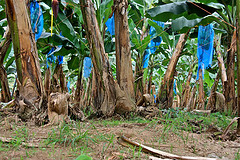
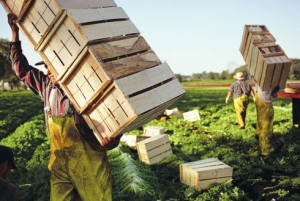
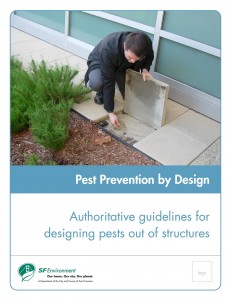
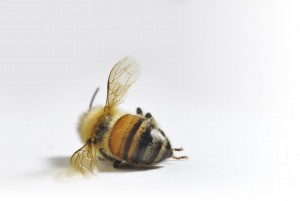
.JPG)
